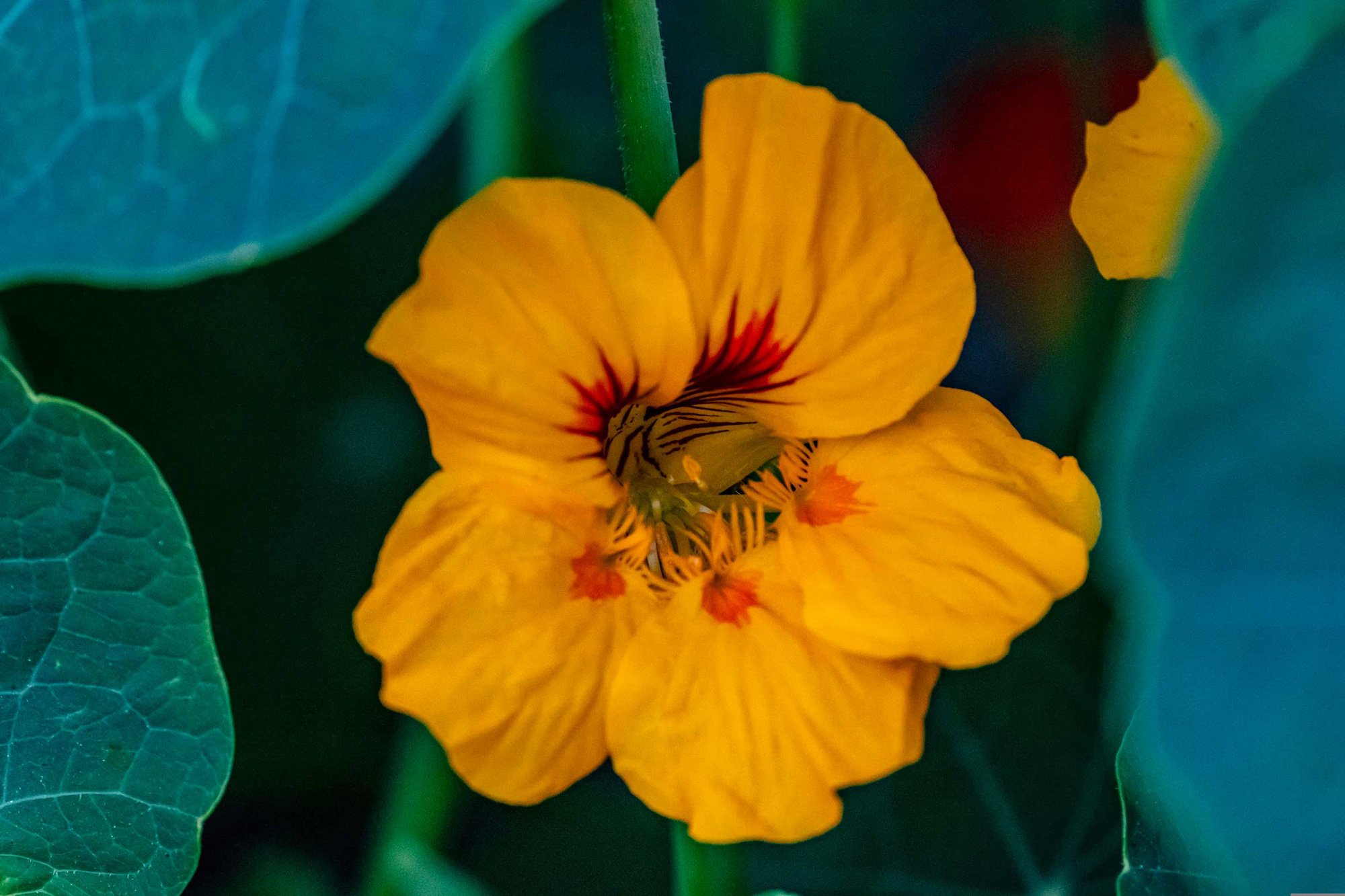Bright & Zesty

Add Color and Zing to Your Dish with Nasturtium Blossoms, Leaves, & Seeds
by Lisa Ludwigsen
Nasturtiums—they tumble from baskets, climb up trellises, and flow across garden beds, often looking like they are on their way somewhere else, just having dropped by for a casual visit. Monet painted them lolling nonchalantly in a porcelain vase and featured them prominently in his gardens at Giverny. Those cheerful flowers in oranges, reds, and yellows give every indication that they are reflecting the summer sunshine.
More than just a pretty face, though, these South American natives are edible from top to bottom—meaning all above ground parts—and they even boast medicinal properties. It could be time for you to bring those flowers, leaves, and seeds into the kitchen to add a peppery punch to seasonal dishes.
Nasturtiums are easy to grow. In fact, writer and California native plant expert Judith Larner Lowry writes in her book, California Foraging, that “On the coast of California, [nasturtiums] have naturalized, and though still planted as a garden flower, are classified as an invasive weed.” Not surprisingly, these flowers are natural reseeders, and just a handful of seeds can populate your garden or container with ongoing plants for years to come.
Nasturtiums are also good pollinators. In my garden, gophers and deer share my love of their delightful zestiness, so my nasturtiums are pot- bound on the porch or planted in a wire basket adjacent to the house. They like coolish weather, petering out when the temps rise above 85°F, but along the coast or in a shaded spot, they can flourish through fall.
Kids love eating them, too. When working with little ones in the garden, we talk about eating all the colors of the rainbow. Nasturtiums’ bright flower colors not only can brighten food but also mood. If you’ve got nasturtiums growing in your garden or can plant them for fall, here are a few ideas for adding them to your kitchen creations:
Flowers are fun to nibble and so much more. They look lovely when delicately wrapped around a bite-sized round of goat cheese or sprinkled into salads, either sliced or whole. Elevate that cobbled-together supper or appetizer platter with a sprinkle of julienned flowers. The spiciness can add a distinctive and savory undercurrent to many dishes. I’ve even seen a suggestion for freezing the flowers into ice cubes for cocktails or iced tea.
Leaves: While the flowers can grab all the glory, nasturtium leaves are not to be forgotten. They add dimension and zest to salads or even a quickly sauteed stir-fry. Use nasturtium leaves as an alternative to arugula or spinach, or try them with scrambled eggs, omelets, or frittatas.
Seeds: Young, unripe nasturtium seeds can be pickled and used in place of capers. They are quite spicy and can also be eaten plain when they are fresh and malleable. Once they harden, they should be planted, not eaten.
While you’re incorporating nasturtiums into your meals, you’ll also be adding vitamin C and antioxidants to your diet. They’re also known to hold antimicrobial and antifungal Properties.
From salads to zesty pickled treats, nasturtiums offer a unique way to add a touch of seasonal warmth and spice to your plate. The next time you see them basking in the sun, step beyond admiring their beauty and bring them inside for a peppy addition to just about any meal.
Lisa Ludwigsen has been working in environmental education and small scale agriculture for 25 years. She chronicles her experiences and travels at Food, Farms & Families at https://lisaludwigsen.substack.com
